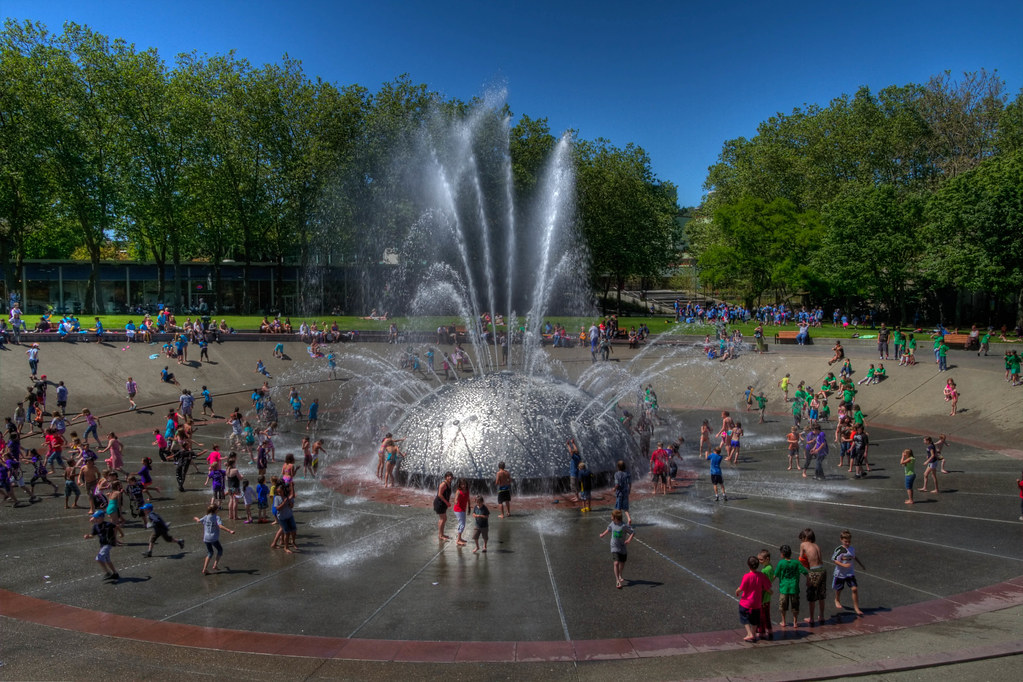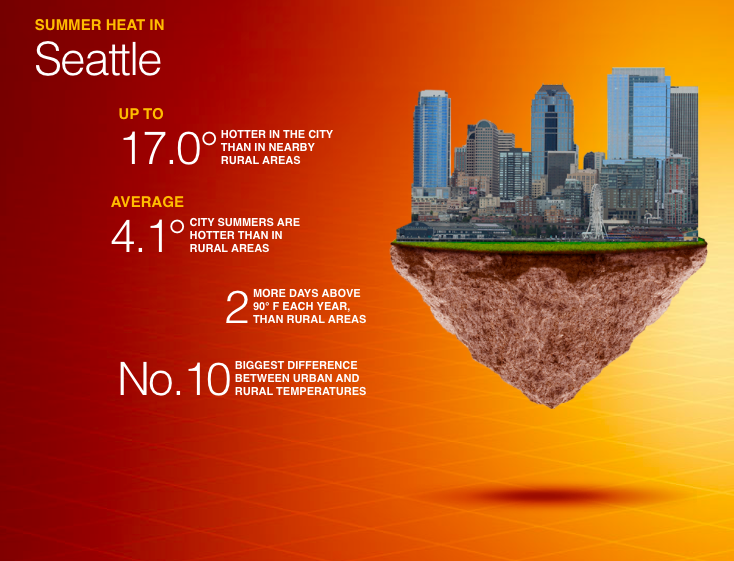
Air Conditioning and Summer Insulation are Necessities, Not Amenities.
After moving to Seattle in 2020 from Southern California, I was surprised to find that the mysterious knob on my apartment wall didn’t activate an air conditioner. Instead, after a brief period of rattling, I slowly started to feel the temperature rise from a small radiator tucked underneath my window.
This was my first experience with the strange phenomenon that is Western Washington’s lack of air conditioning, or A/C. With only around 40% of all homes containing some form of cooling, Washington falls incredibly below the national average of 91% according to the US Census and American Housing Survey. Increasing cooling in the region should be considered a top priority, as temperatures continue to rise in the summer months.
[Editor’s Note: Hannah Weinberger at Crosscut has also been thinking about these issues with a new article updating the region’s A/C numbers.]
Thinking about cooling in the middle of winter may seem counterintuitive. After all, nothing really sounds better right now than hiding in a warm bed and watching the cold snow fall gently outside the window. But the winter season is actually a crucial time for planning and implementing policies for the summer. Contractors are scheduling their appointments prior to the return of the summer heat, A/C equipment tends to be cheaper, and a rush of new legislative priorities for Olympia are being considered by every municipality with the start of the new year. Preparing for the summer heat requires time and consideration by both property owners and the local government, which can’t be accomplished in a reasonable time frame when the heat starts rising.
In a region as historically temperate as the Pacific Northwest, maintaining hospitable temperatures during the summer has not been a priority, as summer weather rarely reached a point where A/C would be considered necessary for comfort.
However, this has changed dramatically in recent years due the effects of climate change. Heat wave events such as those experienced in 2021 killed over 150 people in Washington and sent over 1,000 people to emergency departments all over the region due to heat-related illnesses such as heat exhaustion and heat stroke. Much of this suffering could have been avoided, if individuals were able to find refuge from the heat.

Cooling Western Washington is a lot easier said than done, as there are many barriers that stop individuals from finding refuge, including A/C equipment costs, accessibility, to a lack of information on what to do and where to go. Fortunately, many of these have solutions that are being implemented by King County. However, one barrier remains: renter property codes.
As of 2022, property owners are responsible for maintaining hospitable temperatures from September through June, omitting the hottest months of July and August. Until an effort is made to update these property codes to include maintaining hospitable temperatures throughout the year, Seattle will continue to miss one of its most vulnerable populations in regards to mitigating heat-related illnesses.
While all regions in Washington face similar heat risks during heat waves, urban areas like Seattle are more severely at risk when compared to suburban or rural regions. This is due to the Urban Heat Island effect (UHI), a phenomenon observed in most major urban areas where the temperatures are significantly warmer compared to surrounding regions. Through a combination of asphalt surfaces, clustered concrete buildings, and polluting masses of vehicles and industry, urban areas tend to absorb heat and prevent it from dissipating. At best UHI makes days and nights uncomfortable – at worst it can make an individual’s unit inhospitable.
Directly mandating A/C in rental units can be considered, but updating the language to only specify that the temperature be maintained would be a more feasible option. It gives flexibility to property owners hesitant to install extensive and expensive A/C systems. The installation of portable or window A/C units into homes is often possible, but in reality are hard to accomplish due to either incompatible windows or fears of improper installation causing damage or injuries. By allowing more flexible language permitting solutions other than A/C installations, property owners will have an easier time abiding by the updated regulations and still providing cooler temperatures to renters.
The alternatives to traditional A/C cooling systems can often provide other benefits beyond just costs, such as being more sustainable for the environment and more pleasing to the eye. Aside from installing A/Cs, renovating units with better insulation and using greenery on the property can help to prevent temperatures from rising within apartments. Building techniques used to achieve Passive House standards can also be implemented, such as high-performance triple-pane windows and airtight enclosures that prevent the loss of conditioned air and reduces the need for extensive A/C systems.
Whatever implementation a property owner uses to regulate temperatures in their units during the summer months, it will require time and preparation before any tenant can experience the effects. The conversation regarding cooling should be brought up now to our landlords and representatives, in order to get the legislative drive needed for change. And before we all begin sweltering in the summer heat once more.

Gabriel Dimaandal (Guest Contributor)
Gabriel Dimaandal is a third-year undergraduate student at the University of Washington currently working towards a degree in Public Health. After discovering a passion for built environments and policy, he is taking the opportunity through the UW to discover more about a fascinating field and a potential career in urban planning.


